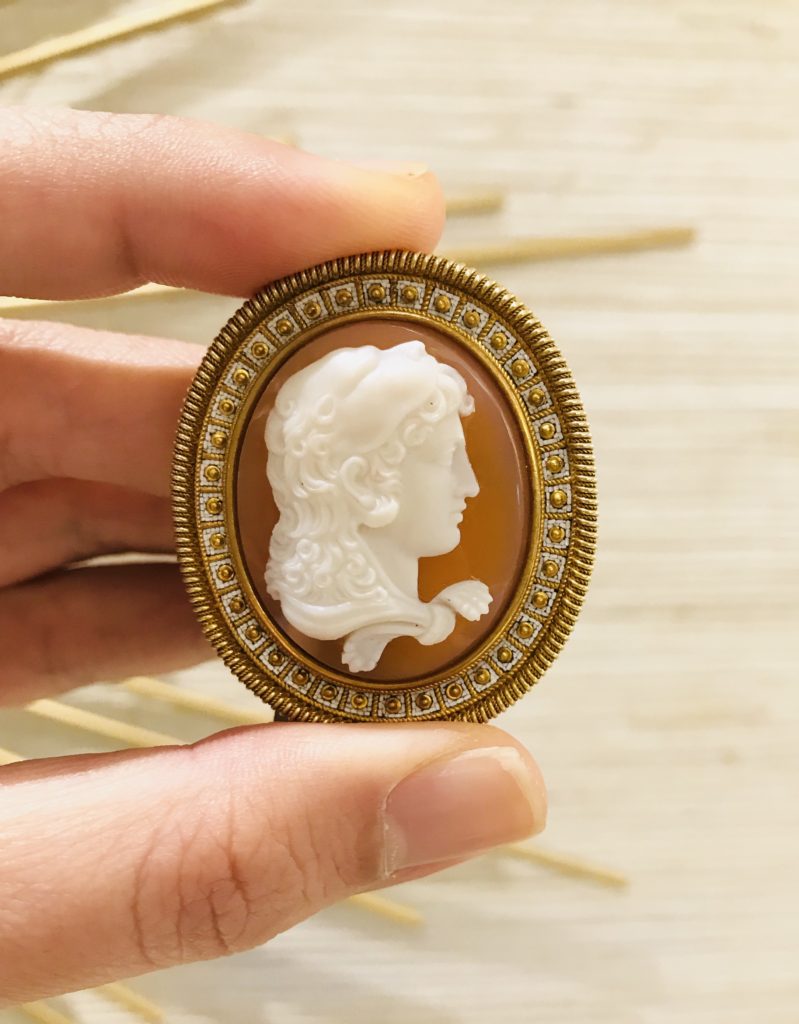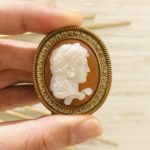Revival Vintage Jewels Turns Five
Revival Vintage Jewels & Objects celebrated her 5th anniversary with a series of talks. Speakers were renowned jewellery historians, Vanessa Cron & Vivienne Becker. Being a jewellery junkie who enjoys nerdy activities like Discussing Jewellery And Watches Over Happy Hour, I signed up immediately. Moreover, Revival Vintage Jewels is conveniently located at Wheelock Place. So I actually visited Brenda Kang’s lovely shop twice, to admire her antique jewellery and investigate their history.
Changing Worlds Changing Styles
Here are some pieces from Revival Vintage Jewels that reflect changing jewellery styles through history from 1850 to 1950. Essentially these were the Victorian, Art Nouveau, Art Deco & Retro ages.
Victorian Age
Renaissance Revivalist Trend
By the time Queen Victoria came to the throne, her people were already quite enchanted by the past. For decades the discoveries of Pompeii and novels by historian Sir Walter Scott charmed them. When the Suez Canal opened in 1867, travel increased sharply. Subsequently, the fashionable thing among cultured folks was the grand tour of archeological sites, complete with souvenir jewels. Consequently, jewellery referencing historical jewellery was pretty trendy.
At Revival Vintage Jewels I found just such a cameo from the 1850s-1880s. Carved from a single piece of bi-coloured agate, is Hercules wearing a lion’s skin over his head. Micro-mosaic and rope twist in 18k gold are features of this renaissance revival piece.
Another treasure is this pair of gold earrings which Vivienne is holding up. From the 1880s, they’re inspired by Etruscan motifs. These too, feature rope twist gold beads.
Exoticism
In the same cabinet at Revival Vintage Jewels, lies a charming gold coin bracelet. It is from the mid to late 1880s with Japanese images. On it, I see a sailboat, a heron as well as toads pulling each other in rickshaws. I wonder what folklore inspired them.
Around that time in the 1860s, Americans made trade deals to open up isolationist Japan. Suddenly, the West saw stunning Japanese artwork using wood, double-sided enamel plaques as well as mixed metal work. The latter was developed from the work of samurai sword makers.
Art Nouveau
Then came the transformative Art Nouveau period of the late 19th century. Jewellery carried heavy symbolism and a new interpretation of the female form. A classic example is the jewellery by Lalique, who emphasised metamorphosis as the centuries changed. The winged woman emerging from her chrysalis symbolises the constant cycle of life and death.
Another beautiful Lalique pendant features dragonflies and is intricate from all sides. Looking at the cost of the individual gemstones, you might feel their additive value doesn’t amount to the price. However the beauty symbolic of this decadent age adds to the artistic value of jewellery design. This is a theme previously referenced in Jeweluxe And The Fellowship Of The Ring.
Art Deco
Art Déco was an interesting age. The first stage favored figurative styles with baguette cut diamonds. Jabot pins were the prime piece of the Art Déco in the 1920s. As they could be worn anywhere like a lapel or a cloche hat, they represented a new freedom for women.
Presently, modernism started to play a part in the second stage of Art Déco in the 1930s. The influence of the machine, steamship and travel is evident. You can see it in the rolling, rocking lines of cubism and new forms of jewellery design.
Other designers were ahead of their time. They moved away from the straight lines and platinum aesthetic of the early Art Deco period. For instance, the bold collaboration between Chanel & Verdura. They mixed fine & costume jewellery, using multi-coloured semiprecious stones geometrically laid out on enamel cuffs. I love this nephrite Verdura cuff bearing the iconic Maltese cross. Unfortunately, it is too small for my wrist.
Retro
Subsequently, in the post depression era of the wall street crash, there was less money going around. Hence ladies started wearing jewellery that had more flash for cash. This included lots of yellow gold and semi-precious stones. During this time, many important stylistic techniques were developed and perfected. An example of such technology was the mystery setting by Van Cleef using lots of small stones flooded with intense gem colour.
Technology liberated design, allowing major jewellery houses to master their signature pieces. Another example is Cartier’s iconic panther, shown here with carved coral.
Even more fascinating is how Cartier’s designer Jeanne Toussant designed a bird in the cage as a patriotic gesture. Did you know the Gestapo arrested her for it? After hearing this story, I fell in love with the free bird brooch by Rene Boivin. Similarly, I understand better, the design of this Tiffany brooch. Using semi-precious stones in colours of the American flag, it represents patriotism.
What Revival Vintage Jewels Represents
And so that’s how jewellery styles changed as world progressed over a hundred years. Thematic jewellery represented certain eras. Victorians were curious of the past yet embracing the advent of travel and economic expansion. Subsequent modernization was evident in the Art Deco period. When World War II exploded, jewellery motifs represented the fight for freedom.
As an expression of personal style, it was a tool for women as they were liberated at the turn of the century and went through multiple metamorphoses in multiple social roles.
Therefore, jewellery is a canvas on which history is sketched out. As long as you’re curious, vintage jewellery will have a tale or two to tell.


